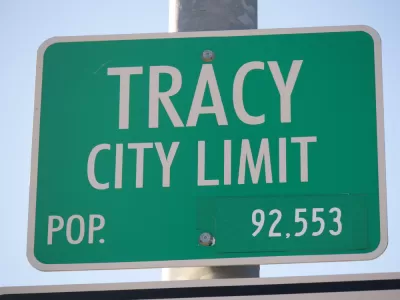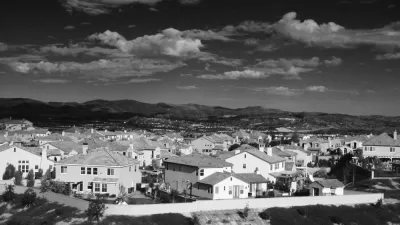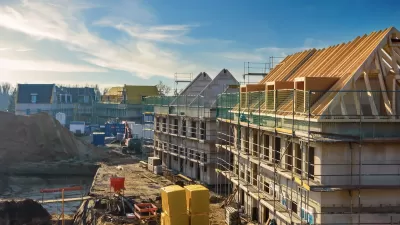Despite the environmental effects of exurban sprawl, Northern California's housing shortage is being alleviated on the extreme edges of the San Francisco Bay Area.

J.K. Dineen reports on a trend that has picked up where it left off with the subprime mortgage crash during the Great recession:
Even in the midst of a climate crisis, the Bay Area’s skyrocketing housing costs are pushing families into far-flung suburbs like Tracy. And the American dream of a single-family home coupled with cities’ restrictions on building multifamily rentals and condos means “exurbs” continue to thrive despite state and local officials’ recognition that they exacerbate climate change.
The example of the development Tracy Hills, located in the city of Tracy located over 60 miles east of San Francisco and 20 miles east of Livermore, is cited to exemplify the resurgence of exurban developments in the Bay Area.
The majority of buyers at Tracy Hills are families who work in the East Bay or Silicon Valley, but are priced out of those communities, said John Palmer, development manager for master developer Integral Communities Homes. Prices for the planned community of 4,700 homes start around $500,000 and top out just above $700,000 — well below the $850,000 median price of a single-family home or condo in the nine-county Bay Area.
Meanwhile the entire city of Tracy stands as a testament to the growth patterns of recent decades, according to Dineen. The population of the city has grown from 18,500 in 1980 to over 90,000 today. The population is projected to rise to 125,000 by 2035.
FULL STORY: Despite climate crisis, California continues to embrace exurban sprawl

Planetizen Federal Action Tracker
A weekly monitor of how Trump’s orders and actions are impacting planners and planning in America.

Congressman Proposes Bill to Rename DC Metro “Trump Train”
The Make Autorail Great Again Act would withhold federal funding to the system until the Washington Metropolitan Area Transit Authority (WMATA), rebrands as the Washington Metropolitan Authority for Greater Access (WMAGA).

The Simple Legislative Tool Transforming Vacant Downtowns
In California, Michigan and Georgia, an easy win is bringing dollars — and delight — back to city centers.

The States Losing Rural Delivery Rooms at an Alarming Pace
In some states, as few as 9% of rural hospitals still deliver babies. As a result, rising pre-term births, no adequate pre-term care and "harrowing" close calls are a growing reality.

The Small South Asian Republic Going all in on EVs
Thanks to one simple policy change less than five years ago, 65% of new cars in this Himalayan country are now electric.

DC Backpedals on Bike Lane Protection, Swaps Barriers for Paint
Citing aesthetic concerns, the city is removing the concrete barriers and flexposts that once separated Arizona Avenue cyclists from motor vehicles.
Urban Design for Planners 1: Software Tools
This six-course series explores essential urban design concepts using open source software and equips planners with the tools they need to participate fully in the urban design process.
Planning for Universal Design
Learn the tools for implementing Universal Design in planning regulations.
Smith Gee Studio
City of Charlotte
City of Camden Redevelopment Agency
City of Astoria
Transportation Research & Education Center (TREC) at Portland State University
US High Speed Rail Association
City of Camden Redevelopment Agency
Municipality of Princeton (NJ)





























